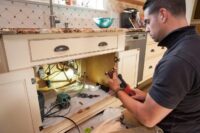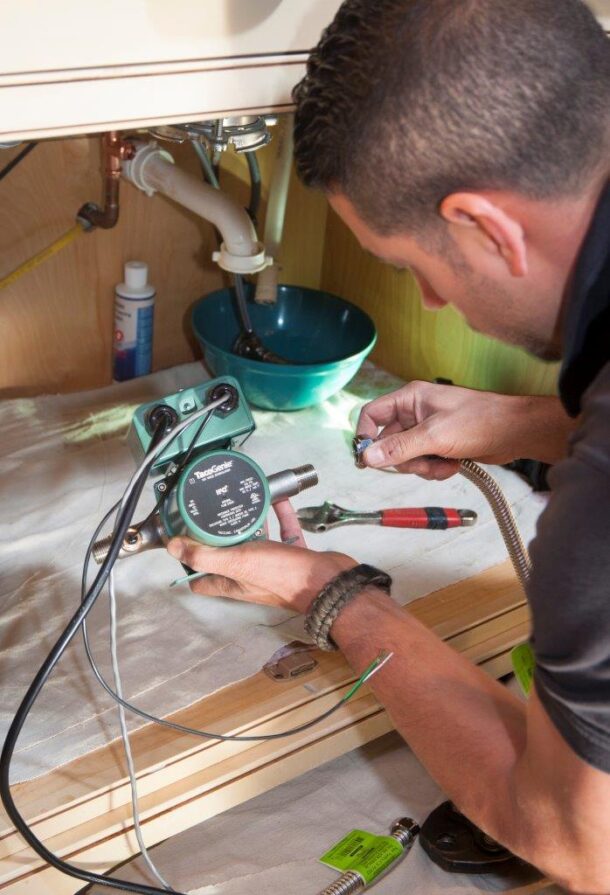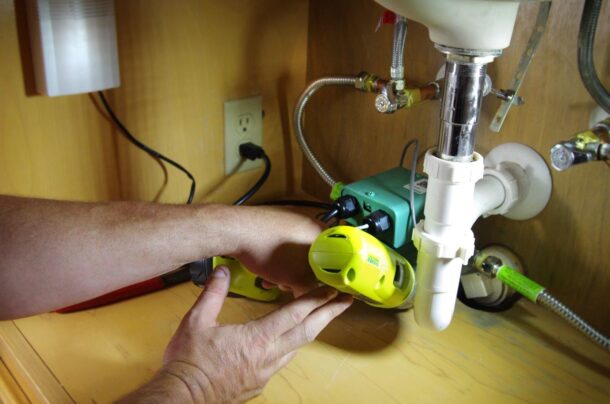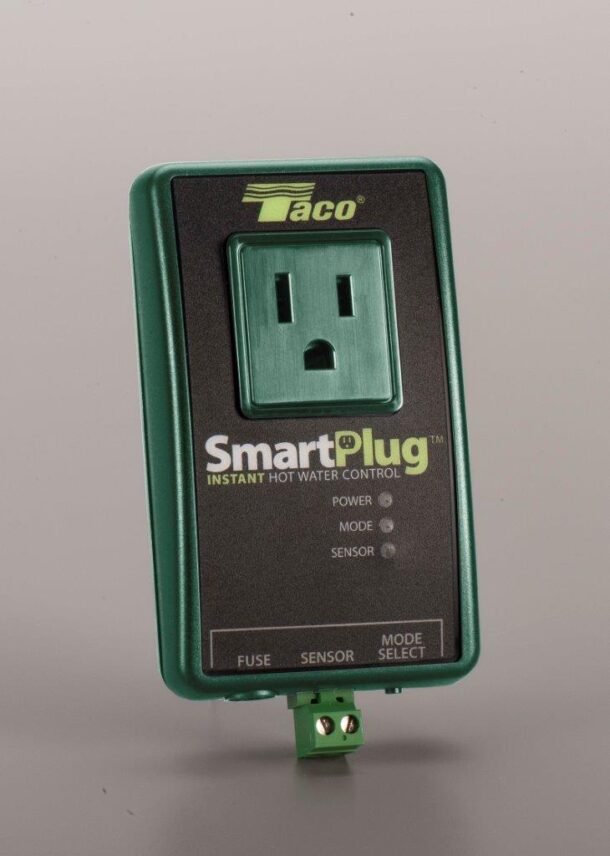Domestic Water’s Creepy Challenge It’s a, well, creepy sort of problem. That is, when hot water recircs lose their ability to govern themselves. So, there’s the problem. But, let’s back up just a bit. Let’s start with an explanation. Then we’ll talk to the experts. There’s little debate that residential or light commercial domestic hot Read more
ASSE 1070 valve

Domestic Water’s Creepy Challenge
It’s a, well, creepy sort of problem. That is, when hot water recircs lose their ability to govern themselves. So, there’s the problem.
But, let’s back up just a bit. Let’s start with an explanation. Then we’ll talk to the experts.
There’s little debate that residential or light commercial domestic hot water recirculation (DHWR) technology has proven its value in the world of plumbing and mechanical systems. The devices guard our safety, comfort and health. Hot water recirc systems move potable hot water to fixtures quickly, without waiting for the water to get hot, so there’s less wasted water, and time.
The key challenge to these simple systems is the problem of “hot water creep.” Let’s take a closer look, beginning with an examination of the components that have a role in the recirculation of a home’s domestic hot water.
Let’s first define the “system” After all, the various components, if not connected intelligently and working in concert, would accomplish nothing:
- Water heater without a tempering/mixing valve. Essentially, an unprotected, full-on arrangement that places anyone at risk.
- Water heater with a distribution tempering/mixing valve (typically, and ASSE 1017, or ASSE 1070 valve). This is most common, and became the point of introduction for DHWR systems.
- Water heater with distribution tempering/mixing valve with a DHW recirculation pump and a bypass valve or pump located at the domestic water system’s most remote fixture – with use of the cold water line as a means of returning water to the water heater.
- Water heater with distribution tempering/mixing valve with a DHW recirculation pump and a dedicated return line from the most remote fixture on that particular hot water zone. Ideally, this is how a DHWR system is installed.
- Finally, all of the above, to include a control of some means; aquastat, timer or combination control with some kind of logic.

“It takes some, or several of the components above, to make a DHWR system,” explained Rick Mayo, product and applications instructor, Western region, Taco Comfort Solutions.
Most recirc systems, by design, have a tempering valve that continuously adjusts its temperature when water flows through it – while tempering (that is, mixing) it with cold water – to maintain proper outlet water temperature for rapid release at points of use.
The challenge is to maintain the mixed water temp during periods of no demand. The reason for this: the recirc’s pump enables flow through the valve, even when there’s no demand, or draw, from points of use – such as faucets and other fixtures. For this reason, recirc pumps must be piped so that the recirc’s returning flow can reach both the cold connection of the valve as well as the cold connection of the heat source. Some balancing may be required.
Smart, by design
Typically, a water heater’s storage temperature is set for about 140°F for legionella mitigation, and the DHWR’s hot water temperature is reduced to under 120°F at the mixed outlet connection of the valve (with the reduced temp made possible by mixing with cold water, by design).
This cause the valve assembly to adjust temperature; that is, until it reaches the hot water’s set-temp. The internal thermostat adjusts the piston to open the cold port and close the hot port, allowing hot water to recirculate. Unfortunately, there can be challenges to the intended function of these systems.
- Creepy situation #1: If the hot water distribution system isn’t insulated, this can cause the distribution loop temperature to creep down during periods of no demand.
- Creepy situation #2: Domestic water systems installed with a domestic hot water recirculation pump may cause downstream water to overheat if it’s not piped properly or is running longer than required. This overheating of temps within the piped system may go unnoticed for quite a while and could cause risk of scalding at points of use.
Mayo offers this insight: The ASSE 1070 valve does a better job of restricting flow of the hot water than the ASSE 1017 and is more effective at preventing “creep.” He clarifies: “Don’t get me wrong. Those ASSE 1017 valves work as intended in non-recirc systems. If the temperature is set for 115°F, they regulate the temperature to that point, almost assuredly. But as soon as you match ‘em up with a (DHW) recirc, problems can begin.”
- Creepy situation #3: Make sure there’s always sufficient flow to meet the DHWR valve’s minimum flow requirement. All DHWR control valves need a certain amount of flow to function properly. A properly sized, recirc pump will usually assure sufficient flow.
- Creepy situation #4: A point-of-distribution, ASSE 1017 mixing valve (or, for that matter, even the ASSE 1070 valve) that does not have a full or completely closed function for its hot inlet port can cause thermal creep if not properly piped and controlled; many mixing valves with an electronic actuator have a fully-closed position so that this doesn’t occur.

Piped conundrum
“It’s often a piping challenge,” said tekmar’s General Manager, Greg Leupin. “For many hot water recirc ‘creep’ challenges, the challenge has to do with incorrect piping. When the recirc is off or at rest, thermal ‘ghost flow’ can affect the amount of hot water that makes its way into the [distribution] piping.
Leupin added that many recirc loops lack a mixing valve, causing excessive – sometimes unsafe – temperature in the recirc loop, increasing the risk of scalding. This can also lead to inefficiency from heat loss, especially when the domestic water lines aren’t insulated.
Smart technology
Manufacturers have stepped in to help negate the risk of domestic water creep when recirc systems are installed. “Installation instructions are more explicit and the technology’s improved,” said Mayo.
“The problem begins when there’s an inability to dissipate the heat during periods of no demand,” added Mayo. “As referenced earlier Some [DHWR] devices close the hot side better than others, so both the built-in control strategy may help, as does the installation piping. Of course, the recirc shouldn’t be running when the distribution system’s already sufficiently full of hot water, readily accessible at taps and other points of use.”
- Taco SmartPlug (which won AHR Expo’s Product of the Year Award in 2017) was developed to eliminate the hassle of a “timer;” because of their design they only allow water to be circulated for short periods of time, this can help fight the challenge of thermal creep. The small device instantly changes any corded hot water recirc – for instance, those with just timer and on/off function – into a “smart” device by giving it the intelligence it needs to learn a household’s usage patterns to improve and regulate hot water distribution, increasing comfort and efficiency. It can also be set into a ‘pulse only’ mode for light commercial applications, or for homeowners who don’t have a predictable schedule.

Other hot water recirc solutions include:
- TacoGenie allows homeowners to simply push a button when hot water is desired at a tap, on demand.
- Watts/Premier 500800 – an ideal solution for retrofitting existing domestic water systems with hot water recirc. The device uses the pump at the water heater (though not tankless systems) and an under-sink sensor valve to create a pressure differential – allowing the cold and cool water in the hot water supply line to bypass into the cold water supply line at a low volume through the thermostatically-controlled sensor valve, keeping the water in the hot water supply line at a “no-wait” temperature throughout the home.
ASSE 1070 valve
As Mayo stated earlier, ASSE 1017 thermostatic valves installed at the water heater or heat source may not close off sufficiently in some instances (while the circulator is running) to stop the outward flow of heat. If this happens, and a recirc pump continues to run, temperatures within the distribution piping can creep upward – creating the potential for unexpectedly hot water at taps.
In a situation like that one, the need for hot water [in the distribution piping] is satisfied, but if the [DHWR] pump’s running, ‘creep’ can occur,” concluded Mayo. “Yet another solution protects users from unexpectedly high temps at the tap with or without replacement of the distribution safety valve – and that is the installation of 1016 or 1070 point-of-use valves. They’re most often used for commercial installations, though there are many residential uses of the valves.”
